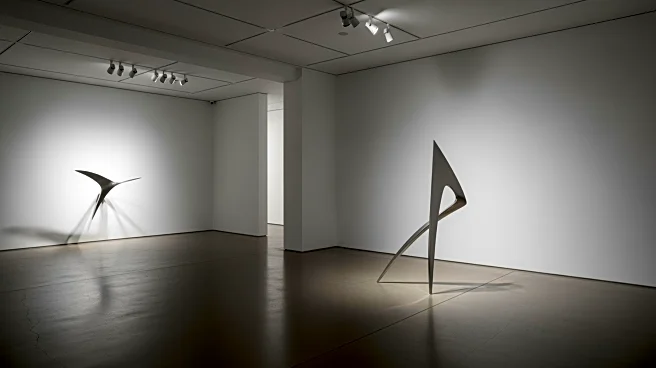What's Happening?
MillerKnoll, a Michigan-based design company, has opened a new gallery space in New York City, located on the ninth floor of its flagship at 251 Park Avenue South. This initiative is part of MillerKnoll's
strategy to expand its ecosystem and foster human connection through design. The gallery's inaugural exhibition, 'Walking Sticks & Canes,' is curated by Milan-based Japanese designer Keiji Takeuchi. The exhibit features a series of walking sticks created in collaboration with designers worldwide, including Cecilie Manz and Jasper Morrison. These walking sticks are reimagined as symbols of movement and connection, rather than just functional tools. The gallery space was previously the studio of George Nelson, a former design director at Herman Miller, highlighting the historical significance of the location.
Why It's Important?
The opening of MillerKnoll's gallery space in New York City marks a significant expansion of the company's influence in the design world. By showcasing global design collaborations, MillerKnoll is positioning itself as a leader in contemporary design innovation. This move not only strengthens its brand presence but also supports the broader design community by providing a platform for creative exchange. The exhibition underscores the company's commitment to design as a means of fostering human connection, which could influence future design trends and practices. Stakeholders in the design industry, including designers and consumers, stand to benefit from the increased visibility and opportunities for collaboration.
What's Next?
MillerKnoll's gallery space is expected to host more exhibitions that explore the intersection of design, art, and culture. This initiative may lead to further collaborations with international designers and artists, expanding the company's reach and influence. As the gallery becomes a hub for design innovation, it could attract attention from industry leaders and enthusiasts, potentially leading to new partnerships and projects. The success of this gallery could inspire other design companies to adopt similar strategies, fostering a more interconnected global design community.
Beyond the Headlines
The gallery's focus on simple, functional objects like walking sticks highlights a shift towards valuing everyday items as art and design pieces. This approach challenges traditional perceptions of design, encouraging a broader appreciation for the aesthetic and cultural significance of common objects. The exhibition also reflects a growing trend in the design industry to prioritize sustainability and longevity, aligning with global movements towards environmentally conscious practices.














